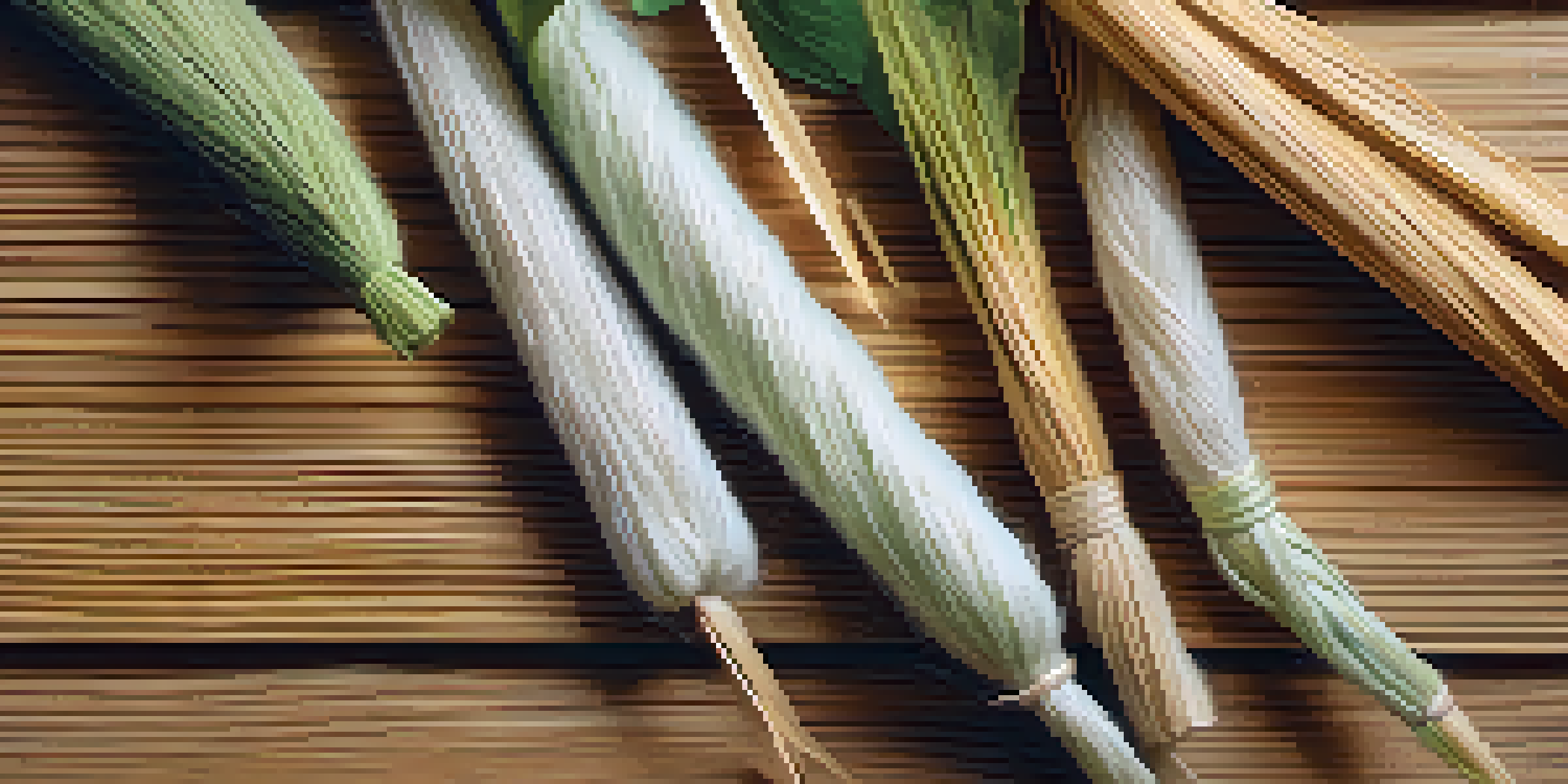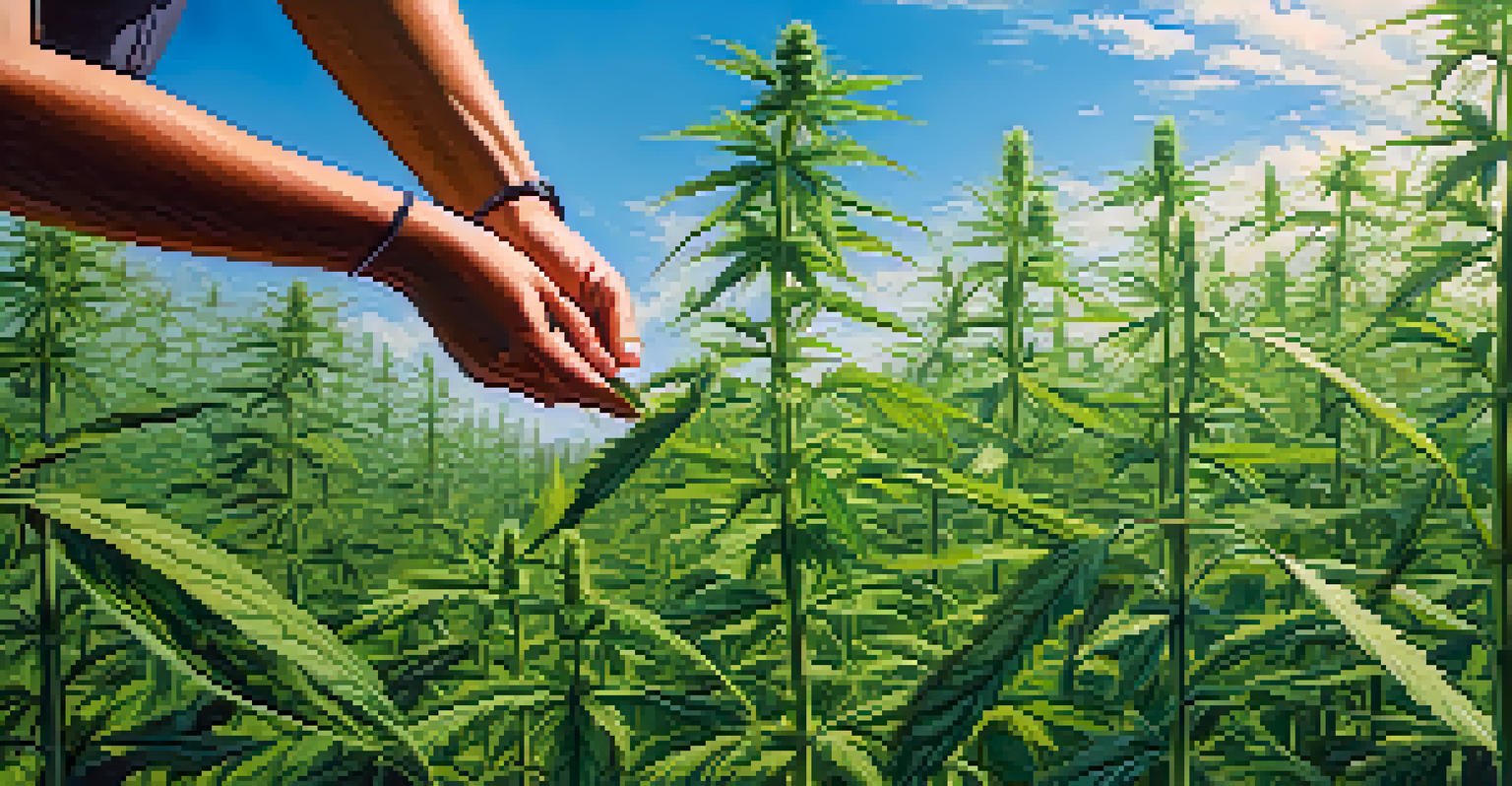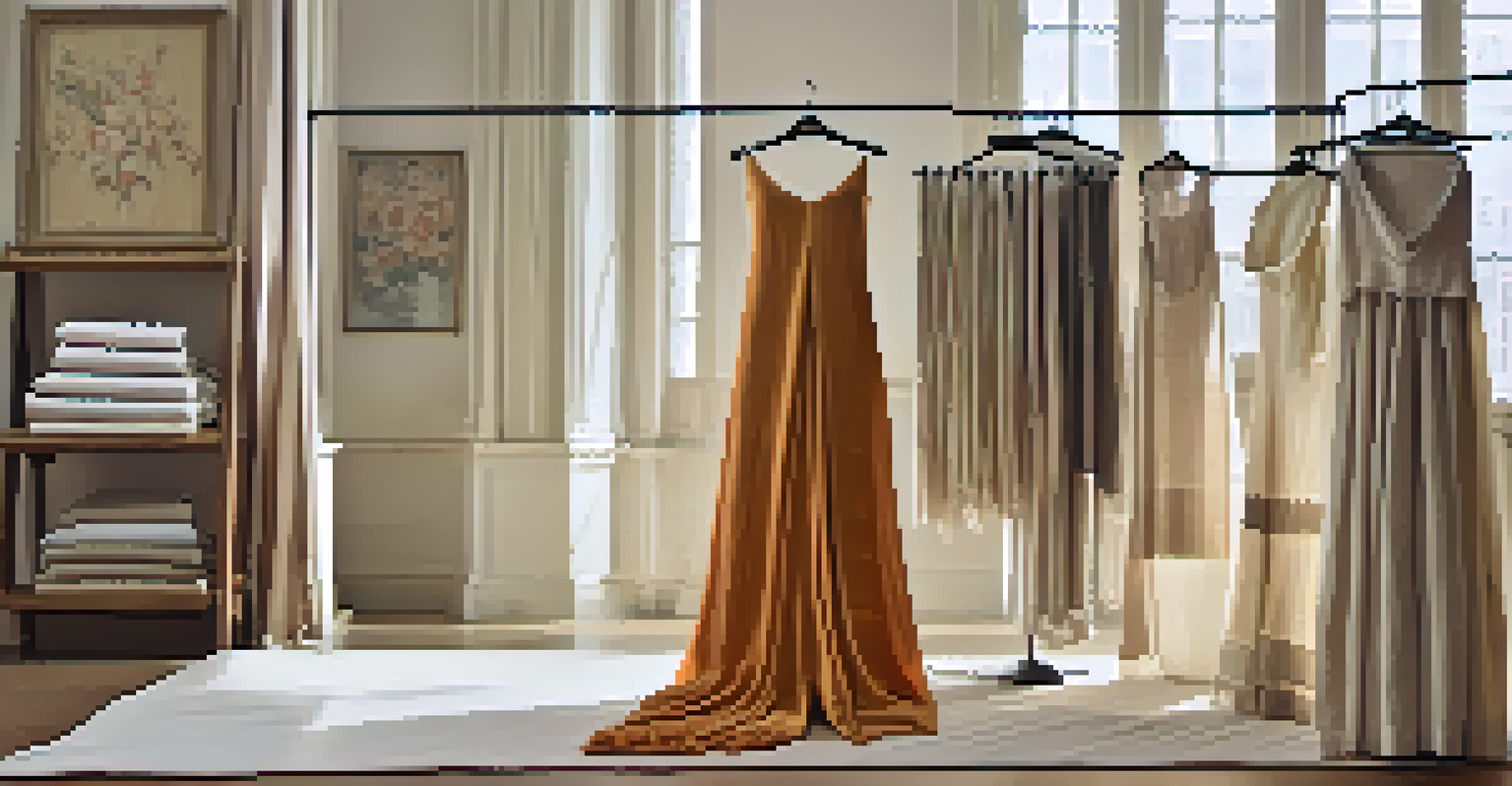Understanding Plant Fibers: Types and Their Textile Uses

What Are Plant Fibers and Why Are They Important?
Plant fibers are natural fibers derived from the leaves, stems, and seeds of plants. They play a crucial role in the textile industry due to their sustainability and biodegradability. Unlike synthetic fibers, plant fibers can be sourced without damaging the environment, making them a preferred choice for eco-conscious consumers.
The future will be green, or not at all.
These fibers are not just environmentally friendly; they also possess unique properties that make them suitable for various textile applications. For instance, they can provide breathability, moisture-wicking abilities, and even durability, depending on the type. Understanding these characteristics can help designers and consumers make informed choices.
As we delve deeper into the world of plant fibers, we can appreciate their versatility. From cotton used in casual wear to hemp in robust outdoor gear, plant fibers are woven into our daily lives, often without us even realizing it.
Cotton: The Most Popular Plant Fiber
Cotton is arguably the most well-known plant fiber, cherished for its softness and versatility. It is derived from the fluffy seed fibers of the cotton plant and is used in everything from t-shirts to bed linens. Its ability to absorb moisture makes it ideal for warm climates, providing comfort during hot summer days.

One of cotton's standout features is its ease of dyeing, allowing for a wide array of colors and patterns. This adaptability has made cotton a staple in fashion and home textiles alike. However, the environmental impact of conventional cotton farming has raised concerns, prompting a shift towards organic cotton production.
Plant Fibers: Eco-Friendly Textiles
Plant fibers such as cotton, linen, and hemp are sustainable alternatives to synthetic materials, offering both environmental benefits and unique properties for various textile applications.
In addition to its widespread use, cotton fibers can also be blended with other materials to enhance their properties. For instance, mixing cotton with polyester can increase durability while retaining comfort, showcasing how plant fibers can evolve alongside modern textile needs.
Linen: The Elegant Choice from Flax
Linen, made from the fibers of the flax plant, is renowned for its crisp texture and elegant drape. It has been used for thousands of years, often associated with high-quality garments and home textiles. One of linen's most appealing qualities is its breathability, making it a favorite for summer clothing.
Sustainability is no longer about doing less harm. It's about doing more good.
Despite its luxurious feel, linen is also incredibly durable and becomes softer with each wash. This unique characteristic allows it to age beautifully, often becoming more desirable as it develops a lived-in look. However, linen does wrinkle easily, which is part of its charm for many enthusiasts.
Sustainability is another strong point for linen; the flax plant requires far less water than cotton and can be grown in poor soil conditions. As consumers become increasingly eco-aware, linen’s appeal continues to grow, positioning it as a smart choice for sustainable fashion.
Hemp: The Strong and Sustainable Fiber
Hemp is gaining popularity as a robust and sustainable plant fiber. Derived from the stalks of the hemp plant, it is known for its exceptional strength and durability. Unlike cotton, hemp requires minimal water and no pesticides, making it a highly sustainable option for both producers and consumers.
One of hemp's remarkable features is its ability to regulate temperature, providing warmth in the winter and cooling properties in the summer. This versatility makes it suitable for a range of textile applications, from clothing to home furnishings. Moreover, hemp fabric becomes softer with each wash, enhancing comfort over time.
Innovative Future for Plant Fibers
The textile industry is increasingly embracing plant fibers, driven by consumer demand for sustainable options and advancements in fiber processing techniques.
Despite its many advantages, hemp has faced stigma due to its association with marijuana. However, advancements in agricultural practices and changing public perception are helping to position hemp as a legitimate contender in the textile industry, especially among eco-friendly brands.
Bamboo: The Eco-Friendly Alternative
Bamboo fibers are a relatively new entrant in the textile world, but they are quickly gaining traction due to their eco-friendly credentials. Bamboo grows rapidly and requires little water, making it an ideal crop for sustainable fiber production. The fibers can be processed into soft, breathable textiles that rival cotton in comfort.
One of the unique properties of bamboo fabric is its natural antibacterial qualities, which can help reduce odors and enhance hygiene. This feature makes it a popular choice for athletic wear and undergarments. Additionally, bamboo textiles are often praised for being hypoallergenic, making them suitable for sensitive skin.
However, it's essential to note that the processing of bamboo into fabric can sometimes involve chemicals that may impact its eco-friendliness. As the industry evolves, finding ways to produce bamboo textiles sustainably will be crucial in maintaining its reputation as an environmentally friendly option.
Ramie: The Lesser-Known Plant Fiber
Ramie is a lesser-known plant fiber that comes from the ramie plant, a member of the nettle family. Known for its luster and strength, ramie is often referred to as 'China grass' and has been used in textiles for centuries. Its natural sheen gives garments a luxurious appearance, making it a popular choice for formal wear.
One of ramie's standout features is its resistance to wrinkles and mold, which makes it an excellent choice for summer clothing. It retains its shape well and dries quickly, adding to its practicality. However, ramie fibers can be coarse, which may necessitate blending with softer materials for improved comfort.
Diverse Uses of Plant Fibers
From cotton t-shirts to hemp outdoor gear, plant fibers are versatile and woven into everyday life, often without consumers realizing their ecological advantages.
While ramie may not be as mainstream as cotton or linen, its unique properties and eco-friendly nature are gaining attention. As consumers seek out diverse and sustainable fabric options, ramie is poised to carve out its niche in the textile market.
Sisal and Coir: Unique Plant Fibers for Textiles
Sisal and coir are two unique plant fibers that are often overlooked in the textile industry. Sisal, derived from the agave plant, is known for its toughness and is primarily used for ropes, mats, and other durable goods. Meanwhile, coir, sourced from coconut husks, is celebrated for its water-resistant properties and is often used in mats and rugs.
Both sisal and coir offer ecological benefits, as they are biodegradable and sourced from renewable materials. Their rugged characteristics make them well-suited for outdoor textiles and home decor items that require durability and functionality. Additionally, they can add a rustic charm to interior spaces.

While these fibers may not be as soft or versatile as cotton or linen, their unique applications highlight the diversity within the world of plant fibers. As sustainable practices gain importance, sisal and coir are finding their place in a more eco-conscious textile market.
The Future of Plant Fibers in Textiles
As the textile industry continues to evolve, plant fibers are set to play a significant role in shaping its future. With growing awareness of environmental issues, more brands are turning to sustainable fibers for their collections. This shift not only benefits the planet but also caters to a consumer base that values ethical and eco-friendly options.
Innovation in fiber processing and blending techniques is also expanding the possibilities for plant fibers. Researchers and manufacturers are finding new ways to enhance the properties of these natural fibers, making them more competitive with synthetic options. This could lead to exciting developments in comfort, durability, and versatility.
Ultimately, the future of plant fibers in textiles looks promising. As we embrace sustainability and seek to reduce our environmental footprint, plant fibers will undoubtedly remain at the forefront, offering both style and substance in our clothing and home textiles.